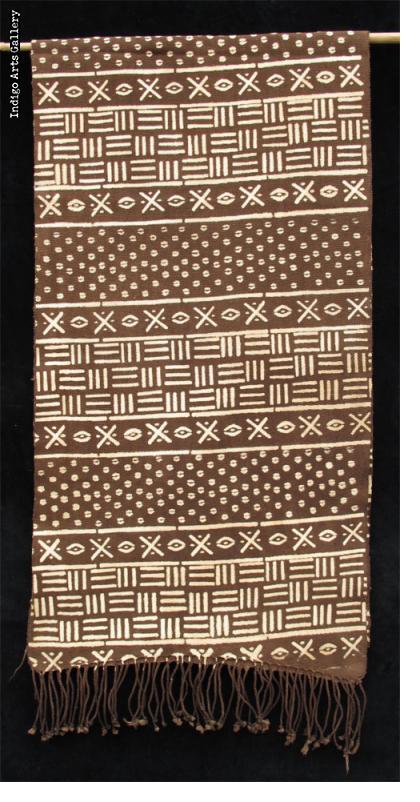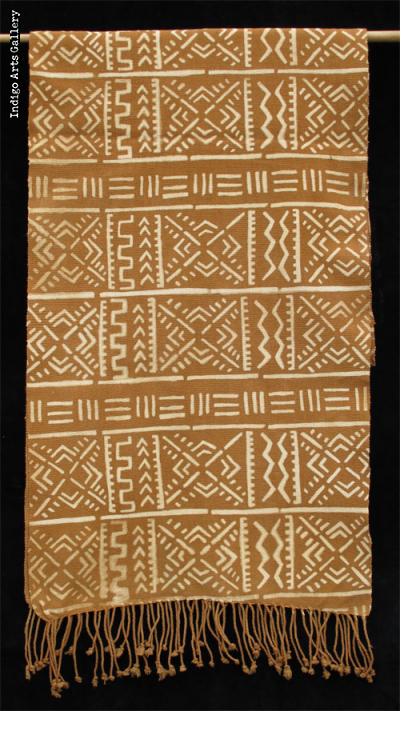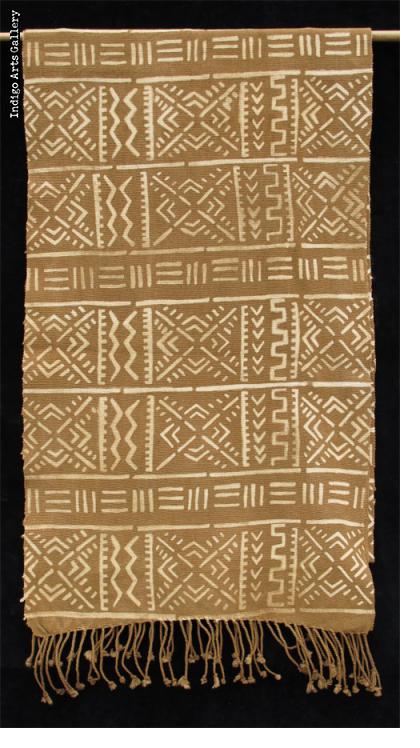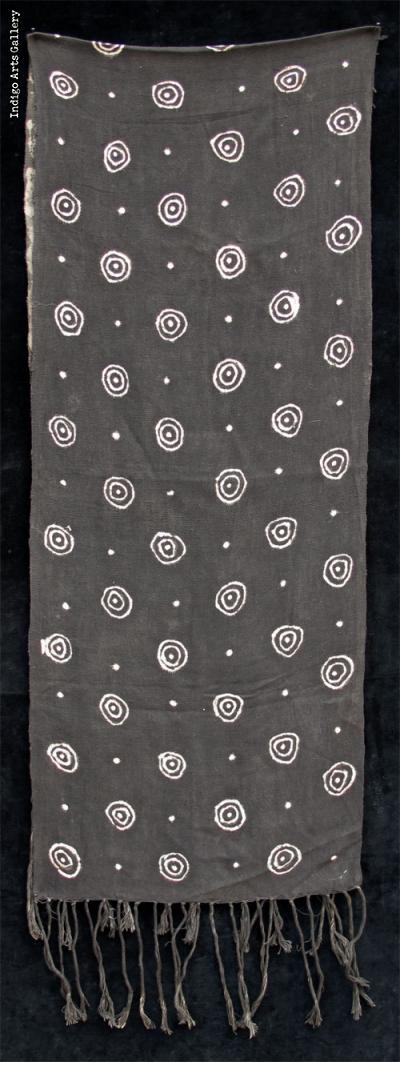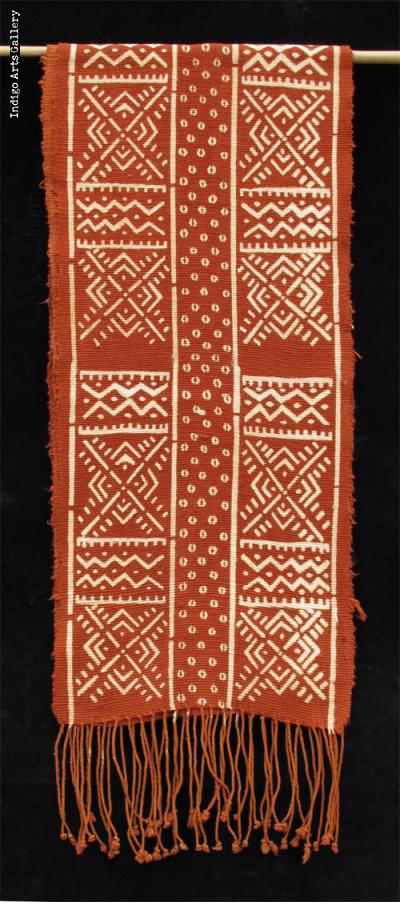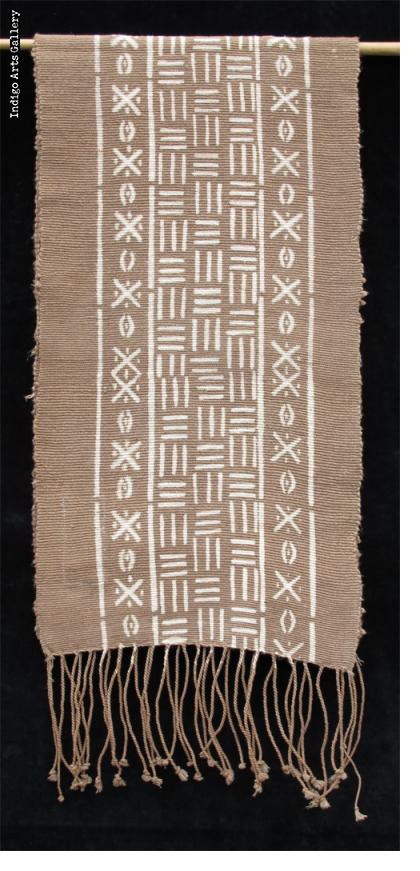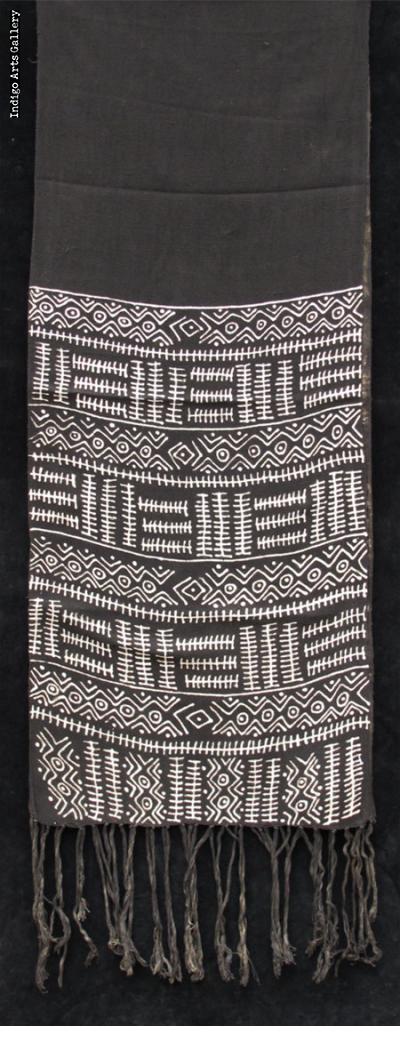The following information is from the Smithsonian website:
"Bogolan is to its wearer what the shell is for the turtle".
Mud-dyed cloth, bogolan, can not only be seen everywhere in Mali-it has gone global. Clothing and interior designers worldwide now use it or copy its designs.
The cloth's distinctive brown-red color comes from iron-rich mud. Traditionally, an artist handpainted only the negative spaces, letting the main image stand out as the unpainted white design on the cloth. Recently, some mudcloth artists have experimented with stencils that reverse how the design is made. The mud color becomes the main design, while the unpainted white areas serve as the design background.
Traditionally, Bambara (Bamana) women, as well as those of the Minianka, Senufo, Dogon, and other ethnic groups, produced the cloth for important life events and taught the process to their daughters. Men, especially hunters, wore it for celebrations. Today, both women and men make mudcloth for sale in markets, and Malian students study it at the arts academy.

